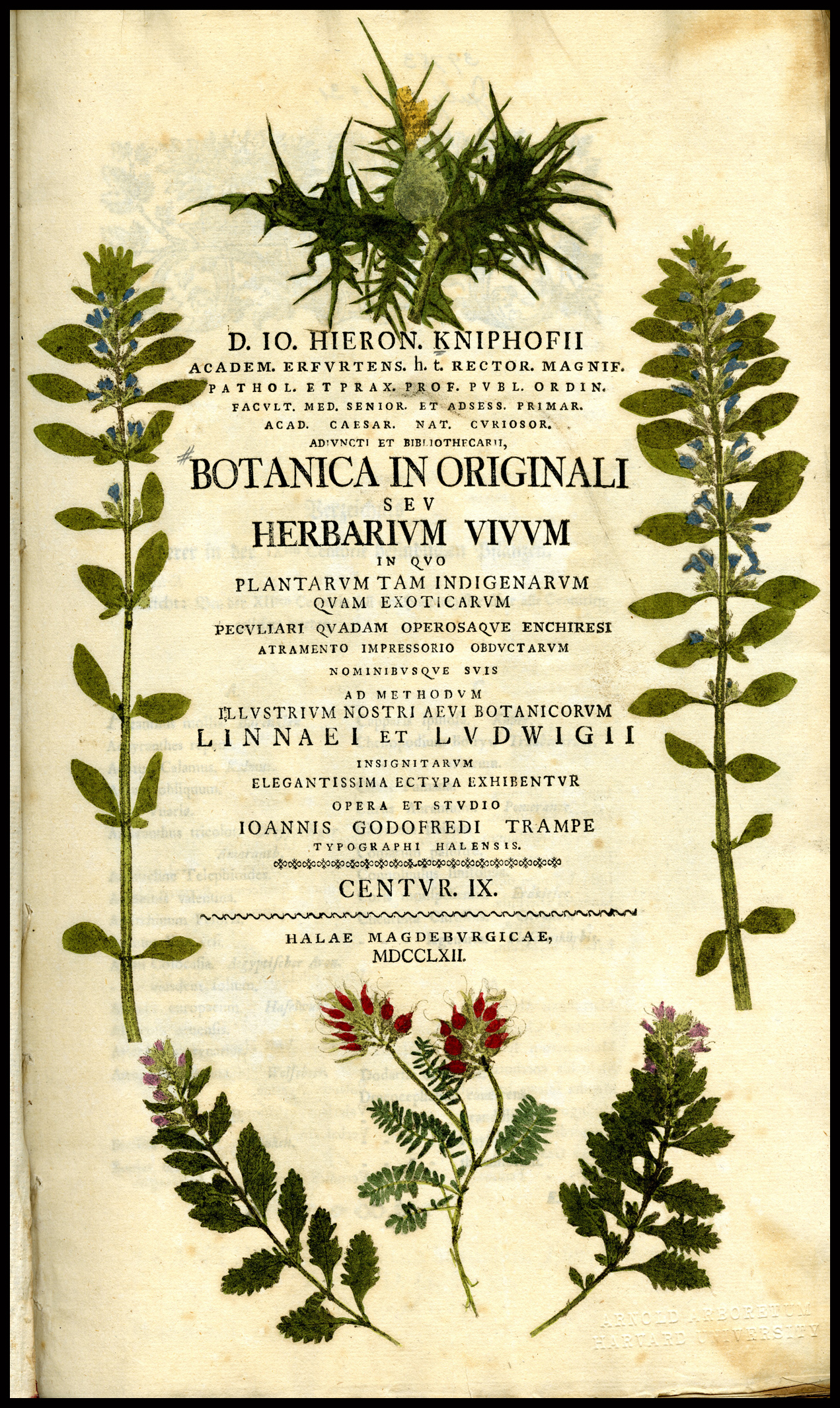Johann Hieronymus Kniphof on:
[Wikipedia]
[Google]
[Amazon]
Johann Hieronymus Kniphof (24 February 1704 in  He studied medicine at the Universities of
He studied medicine at the Universities of
Johann Hieronymus Kniphof, bedeutender Botaniker, Mediziner und Universitätsrektor aus Erfurt At Erfurt, he assembled a large and impressive herbarium, about which in 1733, he first published a work with the title of "Botanica in originali" (later releases known as "Botanica in Originali, seu Herbarium Vivum"). Considered to be Kniphof's magnum opus, it would eventually be published in several editions. It was renowned for employing a preparation/printing technique known as " nature printing", which at the time was a little understood process that Kniphof had mastered in order to imprint details of various botanical specimens. The botanical genus ''
Erfurt
Erfurt () is the capital and largest city in the Central German state of Thuringia. It is located in the wide valley of the Gera river (progression: ), in the southern part of the Thuringian Basin, north of the Thuringian Forest. It sits i ...
– 23 January 1763) was a German physician and botanist.
 He studied medicine at the Universities of
He studied medicine at the Universities of Jena
Jena () is a German city and the second largest city in Thuringia. Together with the nearby cities of Erfurt and Weimar, it forms the central metropolitan area of Thuringia with approximately 500,000 inhabitants, while the city itself has a po ...
and Erfurt
Erfurt () is the capital and largest city in the Central German state of Thuringia. It is located in the wide valley of the Gera river (progression: ), in the southern part of the Thuringian Basin, north of the Thuringian Forest. It sits i ...
, becoming a professor of medicine at the latter institution in 1737. In 1745 he succeeded Andreas Elias Büchner (1701–1769) as director of the library
A library is a collection of materials, books or media that are accessible for use and not just for display purposes. A library provides physical (hard copies) or digital access (soft copies) materials, and may be a physical location or a vir ...
at Erfurt, two years later being named dean to the faculty of medicine. In 1761 he was chosen as university rector
Rector (Latin for the member of a vessel's crew who steers) may refer to:
Style or title
*Rector (ecclesiastical), a cleric who functions as an administrative leader in some Christian denominations
*Rector (academia), a senior official in an edu ...
.Erfurt-Web-de.Johann Hieronymus Kniphof, bedeutender Botaniker, Mediziner und Universitätsrektor aus Erfurt At Erfurt, he assembled a large and impressive herbarium, about which in 1733, he first published a work with the title of "Botanica in originali" (later releases known as "Botanica in Originali, seu Herbarium Vivum"). Considered to be Kniphof's magnum opus, it would eventually be published in several editions. It was renowned for employing a preparation/printing technique known as " nature printing", which at the time was a little understood process that Kniphof had mastered in order to imprint details of various botanical specimens. The botanical genus ''
Kniphofia
''Kniphofia'' is a genus of perennial flowering plants in the family Asphodelaceae, first described as a genus in 1794. Species are native to Africa. Common names include tritoma, red hot poker, torch lily and poker plant.
Description
Herbaceou ...
'' (family Asphodelaceae
Asphodelaceae is a family of flowering plants in the order Asparagales. Such a family has been recognized by most taxonomists, but the circumscription has varied widely. In its current circumscription in the APG IV system, it includes about 4 ...
) was named in his honor by botanist Conrad Moench
Conrad Moench (sometimes written Konrad Mönch; 15 August 1744 – 6 January 1805) was a German botanist, professor of botany at Marburg University from 1786 until his death.
He wrote 'Methodus Plantas horti botanici et agri Marburgensis' in 1 ...
(1745–1805).
See also
* Herbarium vivumReferences
Medical reference. Hieronymus JH. De luxationibus et subluxationibus. Thesis. Jena, Dec 21, 1746. {{DEFAULTSORT:Kniphof, Johann Hieronymus 1704 births 1763 deaths University of Erfurt faculty Scientists from Erfurt 18th-century German botanists